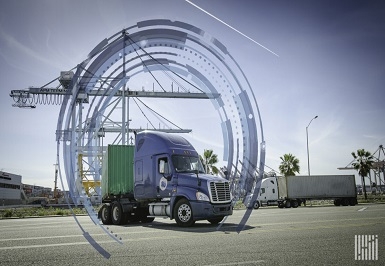Why the Supply Chain Industry is so Dysfunctional (and 4 Technologies That Will Change That)
 Laura Banzer Godefroy
Laura Banzer GodefroyWorking in supply chain I used to start and end my days looking at a list named ´´critical issues´´. At all times, I was focused on resolving urgent problems and accommodating time zones to speak to suppliers all over the world to ensure the purchased materials wouldn´t miss a vessel, cause a stock-out, stop the production, and ultimately delay a customer order.
I spent most of the time performing stressful yet repetitive tasks and crossing fingers wishing multiple issues wouldn’t arise at the same time. I always found myself reacting to these issues with no long-term plan on how to prevent them in the future. Urgent matters didn't leave time for important ones.
This is why I think supply chain is one of the lagging industries when it comes to adopting technology. Supply chain is many times considered only as a cost-generating department and supply chain leaders are too busy focusing on cutting costs and fixing issues post-mortem instead of thinking strategically on how to implement solutions that could prevent these issues in the future.
Yet, I see plenty of opportunities for improvement, optimization, and endless innovation (including long-term cost reduction!) to be made in the supply chain industry with the leverage of technology. As COVID-19 has affected supply chains and how customers behave, there has never been a better time to rethink supply chains and leverage technology to drive the future of business.
Technology provides tools for supply chains to be faster, more reliable, and more efficient. The technologies that will enable these major transformations are Artificial Intelligence, the Internet of Things, Blockchain and Augmented Reality.
Artificial Intelligence enables organizations improve supply and demand forecasts, helping to minimize inventory requirements and proactively identify bottlenecks and delays. Transportation Solutions such as Oracle, MercuryGate and BlueYonder provide powerful Machine Learning algorithms and optimization engines to optimize orders and shipments based on costs, service level and asset utilization. AI also helps supply chain leaders make data-driven decisions when designing optimal global logistics networks that result in long-term business benefits.
Other solutions such as AWS, IBM and EY offer provenance tracing capabilities through private enterprise Blockchain solutions, enabling organizations to precisely trace products across complex and global supply chains from their source using a shared ledger model that increases transparency and trust among parties.
IoT devices enable organizations to monitor real-time manufacturing operations and order deliveries, and combined with AI they can help predict maintenance needs and proactively prevent issues such as work accidents. Supply Chain giants such as DHL and Amazon rely on IoT to maximize their supply chain reliability and velocity.
Finally, LogistiView leverages Augmented Reality and Artificial Intelligence to provide voice prompts and vision-driven instructions through Vuzix smart glasses or Zebra’s heads-up display, helping warehouse workers manage inventory more efficiently and avoid mistakes.
If you work in supply chain I would recommend: take a break, change the scenery and take some time to rethink the future of your organization. Whatever your immediate concerns are, there is a technology that can help you push innovative solutions forward. Focus less on the ´´critical issues´´ and start moving towards the future of supply chain.



